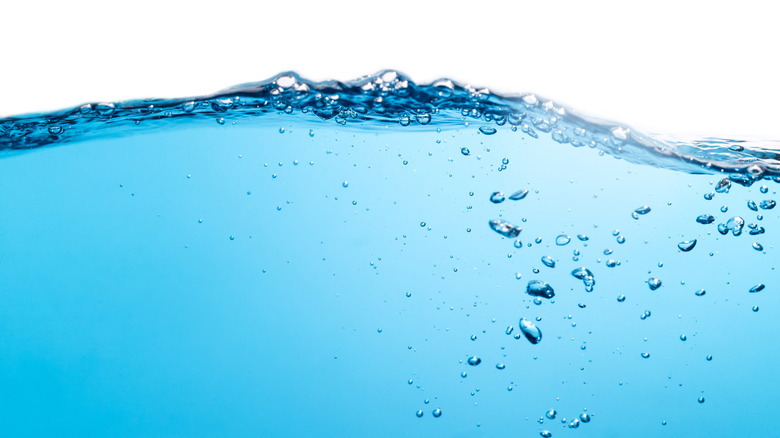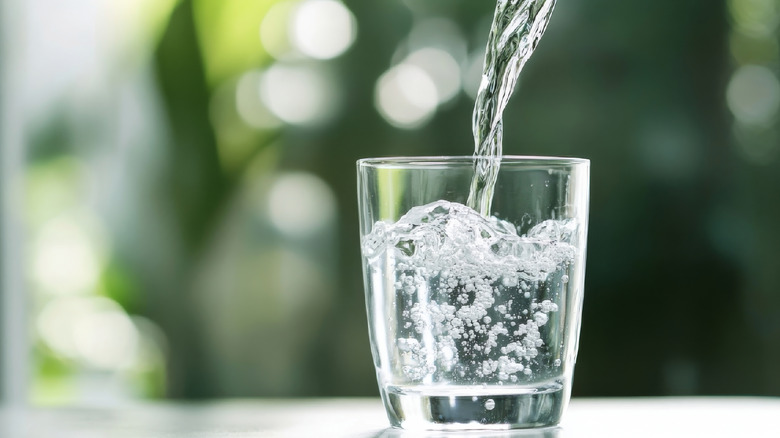How To Make Negatively Charged Water
The water that comes out of your faucet at home has a neutral charge. This polar molecule is made up of one oxygen atom and two hydrogen atoms, which is why it's referred to as H2O. While the hydrogen end of each tiny molecule has a positive charge, the oxygen end has a negative charge, resulting in the neutral charge overall. However, it's possible to break down H2O through the process of electrolysis to make negatively charged water.
For an experiment to give water a negative charge, fill a glass or beaker with room-temperature or warm water. Cover the glass with a piece of cardstock that has two holes about 1 inch apart from each other. Then, sharpen both ends of two No. 2 pencils, and place one end of each through a cardstock hole and into the water, using it as an electrical conductor. With a 6-volt or 9-volt battery, connect the positive terminal to the graphite of one pencil and the negative terminal to the other using some insulated wire with alligator clip leads. If you don't have leads, you can use electrical tape to hold the bare wire ends in place.
Shortly after, bubbles will start floating upward from the tips of the pencils, but you can dissolve some iodized salt in the water first to speed up the reaction. The bubbles are the result of H2O splitting into oxygen from the positive charge (fewer bubbles) and hydrogen from the negative charge (more bubbles). If you have test tubes to place over each pencil, you can even collect and measure the separate gases. Either way, the water will only be negatively charged for a short period because it's a polar molecule and can redistribute its charges.
Easier ways to make negatively charged water
While the above experiment is a fun way to make negatively charged water, it's not the only way. In fact, the experiment works because the negatively charged pencil graphite releases negative hydroxide ions, which raises the pH level in water above the neutral seven. The result matches up with the definition of alkaline water, which has a pH level of eight or nine — like natural spring water.
One of the fastest ways to achieve this same result is to use baking soda to make alkaline water. Simply stir ⅛ teaspoon of the sodium bicarbonate into 1 liter of water until it completely dissolves. If you wish, you can test the pH level of the water with litmus strips or a digital pH test meter before and after adding the baking soda to see the change happen. The reason baking soda works is because it has a pH of about 8.5 at this concentration. Some other direct ways to make negatively charged alkaline water include using pH drops, a specialized water filter, and a water ionizer device.
Another way to turn neutral tap water into alkaline water is to add lemons, although the result is more indirect than direct. Lemon juice actually has a pH level of two to three, which makes them acidic. Therefore, the water you add them to becomes acidic as well. However, lemons — like other fruits and vegetables — contain nutrients such as calcium, magnesium, and potassium that produce alkaline byproducts when they're metabolized. As a result, lemon water is indirectly alkaline.

